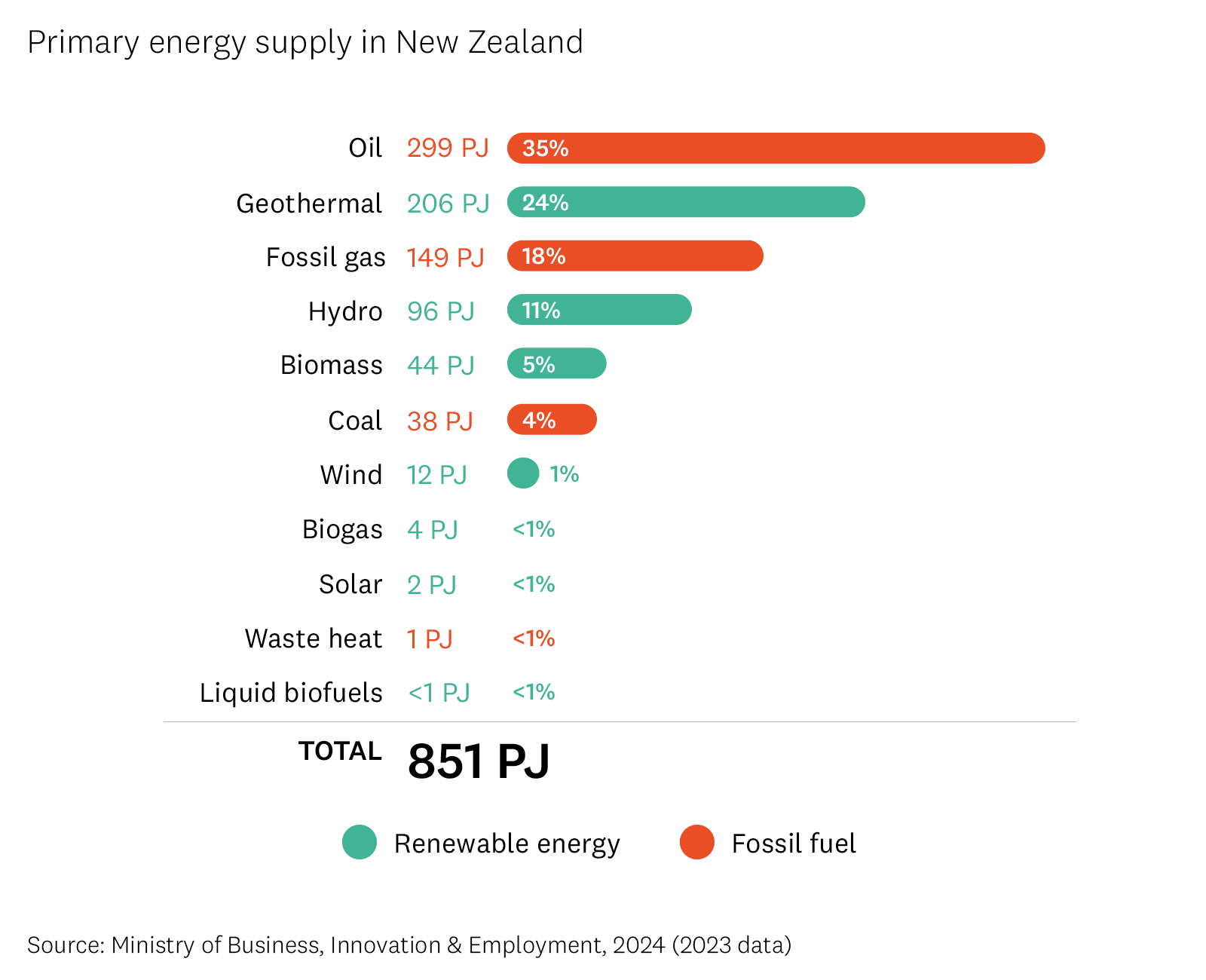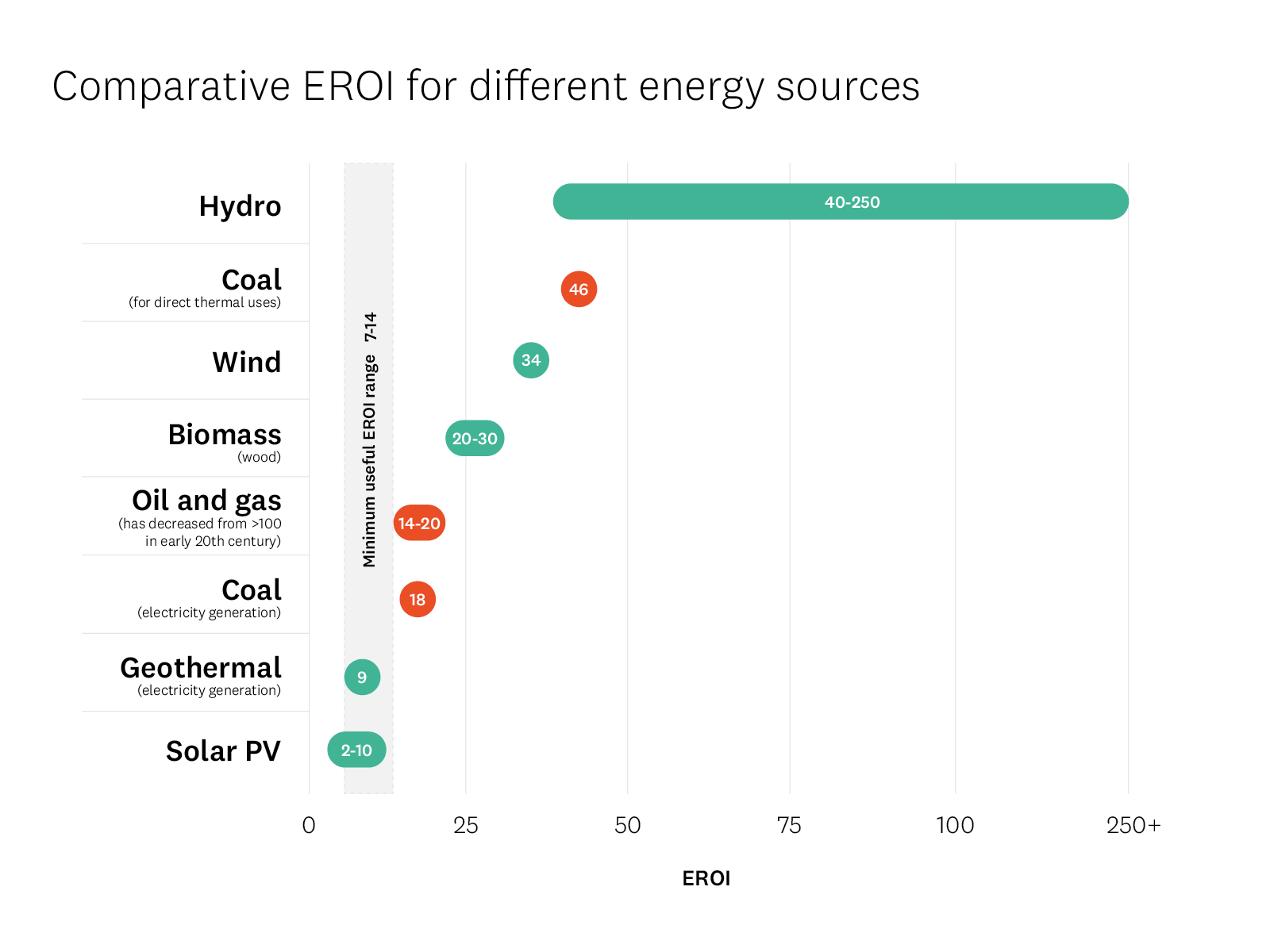By increasing our supply and use of renewable energy, and being smart about how we use electricity, we can improve our energy independence and resilience, and reduce energy-related emissions.
Learn about where our energy comes from and how that could change in the future. Discover what matters in an energy source when it comes to new investment.
Energy in 2050
2:07 minutes
This video imagines what the future could look like, based on outcomes modelled from our TIMES-NZ New Zealand Energy Scenarios data.
This modelling was developed by EECA in partnership with the BusinessNZ Energy Council (BEC) and The Paul Scherrer Institute. It is a technology-based optimisation model that represents the entire New Zealand energy system.
Where our energy comes from
Around 60% of New Zealand’s energy is supplied by fossil fuels. Once energy losses and distribution are taken into account, fossil fuels make up about 70% of our total final consumption. This includes petrol and diesel for vehicles, coal and gas for industrial boilers and household gas and LPG.
Our electricity is mostly generated from renewable energy sources (80-85%). This is largely due to our geography as an island nation with mountains, lakes, relatively consistent wind and rainfall, as well as good access to geothermal resources. The percentage of New Zealand’s electricity generated from renewable energy sources varies each year depending on the amount of rainfall, and to a lesser extent, the amount of wind.
Use of biomass (wood) as fuel is increasing, as businesses transition to renewable energy sources for industrial processes.

Reaching our emissions targets
Energy sourced from fossil fuels is responsible for 40% of New Zealand’s greenhouse gas emissions. Increasing our use of low-emissions renewable energy will be critical to reach our country’s legislated target of net zero emissions by 2050.
Learn about renewable energy
-
Wind
Currently, about 6% of New Zealand’s electricity is generated from wind turbines. This is projected to significantly increase in coming years with several onshore and offshore wind farms under construction or planned.
-
Solar
Modelling indicates that Solar PV (including grid scale and rooftop) could supply 6% of New Zealand’s electricity by 2035, and the cost of solar – which has dramatically fallen in recent years – will continue to decrease.
-
Geothermal
It has been estimated that there is sufficient geothermal resource to double what we currently use for electricity generation. We could also use more geothermal energy directly, for example as industrial process heat, or by finding uses for waste heat from geothermal power stations.
-
Hydro
Hydroelectricity systems are very long-lived, and we expect that hydro generation will continue to provide the backbone of New Zealand’s electricity system.
-
Biomass
New Zealand has a well-developed successful forestry sector and good plant growing conditions with space to grow trees, meaning that increasing biomass availability (particularly from forest waste) is a good option from both supply and sustainability perspectives.
-
Green hydrogen
Green hydrogen is an energy carrier that is produced by electrolysis, a process that uses electricity to split water into hydrogen and oxygen. Hydrogen is emerging as a low-carbon fuel for heavy transport and some industrial processes.
What matters in an energy source?
There are a range of factors that need to be considered to inform investment in new energy generation, or the transition to new sources of energy.
- Energy density — The amount of usable energy contained in a certain volume or mass of primary energy. This matters when there is a need to transport energy from its source to its end uses and when considering storage of energy. For example, biomass has a lower energy density (both by mass and volume) than coal, so a larger amount is needed to produce the same amount of energy.
- Storage conditions — Requirements needed to store the energy (does it need to be stored in a tank, at a particular temperature and/or pressurised), the space required, and/or the efficiency of the storage operation (understanding how much of the energy stored can be recovered).
- Distribution — Understanding how easy the energy is to transport from sources to end uses. For example, determining what infrastructure is needed and whether there are energy voltage or other network impact losses along the way.
- Dispatchability — The extent to which energy can be generated and whether there are constraints. For example, solar and wind power only generate energy when there is sufficient sunlight or wind.
- Scalability — Understanding how much of the energy source is available and can realistically be used or whether there are limitations or constraints in its supply.
- Environmental impacts — Understanding the impact on the environment that the energy has. Use of fossil fuels impacts the environment through release of greenhouse gases into the atmosphere as well as hazardous air pollutants, including sulphur dioxide, nitrogen oxides, particulate matter and carbon monoxides. But low-carbon renewables may also have environmental impacts, either from their direct use (e.g. particulates from biomass), construction of infrastructure needed to deploy renewables (e.g. wind turbines or solar PV), or indirect impacts from technologies associated with their use (e.g. electrification often uses lithium-ion batteries which requires extraction of necessary metals and minerals, construction and operation effects as well as disposal at end of life).
- Production costs and financing options — All energy sources come at a cost. For some sources the cost is mainly upfront in constructing facilities, with very little ongoing cost. For others, the costs might be more balanced, or even weighted towards operating costs. Understanding these costs and financing options is important when considering different options.
- Energy return on investment (EROI) — The ratio between the amount of energy required to extract or produce fuel and the amount of useful energy this fuel makes available to deliver other services – such as transport, heat or light. The graph below illustrates the EROI of renewable energy sources commonly used in New Zealand.
Energy return on investment
For an energy source to be useful it needs to deliver significantly more energy than it takes to extract it. If an energy source’s EROI number is low it means it is difficult to extract in relation to the output we get from it. If the number is high, it is relatively easy to extract. To be worthwhile, an energy source needs to have an EROI above a range of 7-14.
Historically, fossils fuels have had a high EROI, but as oil and gas resources are depleted, they are becoming more energy-intensive to extract. This means their EROI is decreasing. On the other hand, several renewable energy sources are now on par or better than fossil fuels in terms of EROI. Hydro schemes have a wide range of EROI values because there can be very large differences between hydro schemes in the amount of energy and materials required to construct them, and also in the volume of energy generated due to variances in inflows and hydraulic head.

Energy efficiency first
Energy efficiency enables us to do more with the same energy resources. For example, an efficient LED light bulb still lights up the room – but it uses less energy than an incandescent light bulb to do so.
Through the use of efficient technologies and processes, we can improve the affordability and reliability of New Zealand’s energy supply.
Demand flexibility — a smarter grid
Demand management is becoming increasingly important as our electricity demand increases and we transition toward greater use of renewable energy sources.
A ‘smart grid’ system enables electricity supply and demand to be balanced through the use of connected technologies and two-way communication.
‘Smart’ devices (such as EV chargers, heat pumps and hot water thermostats) that have the capacity to communicate with the grid can react to demand and pricing signals, dialling energy use up or down in line with user preferences.
